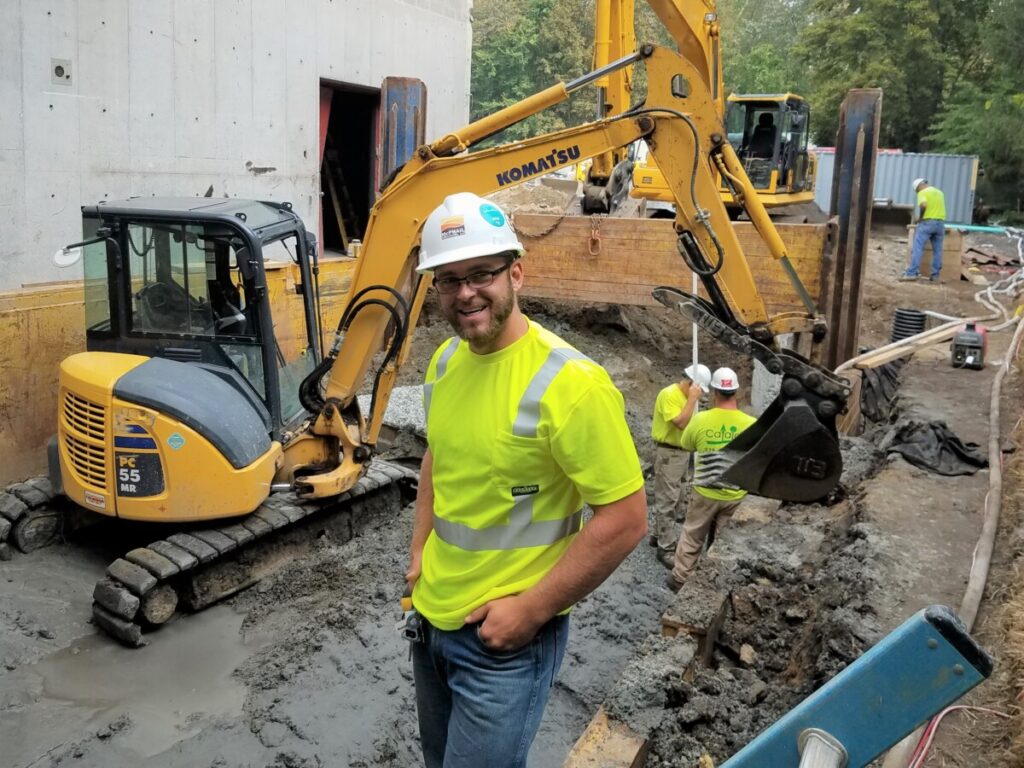Engineer of Record: What You Required to Understand About Their Duties and Effect
Engineer of Record: What You Required to Understand About Their Duties and Effect
Blog Article
The Interdisciplinary Approaches in the Geotechnical Industry: Connecting the Gap In Between Engineering, Geology, and Environmental Science for Optimum Project Results
The combination of design, geology, and ecological science within the geotechnical sector is not simply helpful; it is crucial for achieving ideal job outcomes. What methods might emerge to facilitate this important collaboration and boost the efficacy of geotechnical methods?
Significance of Interdisciplinary Partnership
The relevance of interdisciplinary collaboration in the geotechnical industry can not be overemphasized. Efficient geotechnical jobs call for the combination of varied expertise from numerous areas, including design, geology, and ecological science. This partnership makes sure that all elements of a project are taken into consideration, causing extensive options that attend to complicated obstacles.
Interdisciplinary cooperation cultivates innovation by making it possible for specialists to share understandings and techniques that might not be apparent when operating in seclusion (engineer of record). By leveraging the toughness of numerous techniques, groups can identify prospective risks, optimize style processes, and improve the sustainability of geotechnical jobs. Such partnership advertises an all natural understanding of site-specific problems, which is critical for accurate analysis and decision-making.
The intricacy of geotechnical jobs necessitates a collaborated strategy to analytic. Eventually, interdisciplinary collaboration is necessary for progressing ideal practices and attaining quality in the geotechnical industry.
Trick Roles of Each Self-control
Collaboration among numerous self-controls is not simply useful; it is vital for the successful execution of geotechnical projects. Each self-control-- design, geology, and environmental scientific research-- plays a distinctive yet interconnected duty that adds to forecast effectiveness and sustainability.
Geotechnical engineers are mostly accountable for developing foundations and ensuring structural integrity. They assess soil and rock residential properties to analyze load-bearing capacities, supplying essential information for secure building methods. Their proficiency allows the solution of innovative options to complicated difficulties.
.webp)
Environmental scientists examine the possible impacts of building and construction on environments and water sources. They perform ecological assessments and develop mitigation techniques to decrease damaging impacts. By integrating eco-friendly factors to consider, they ensure compliance with laws and advertise sustainability throughout the project lifecycle.
Study of Successful Assimilation
Successful integration of geotechnical disciplines can be exhibited with numerous study that highlight the efficiency of team effort in attending to complex design obstacles. One significant instance is the building and construction of the Hong Kong-- Zhuhai-- Macau Bridge, where a collaborative method entailing geotechnical design, geology, and environmental scientific research was essential. Engineers and rock hounds worked in unison to evaluate the seabed conditions and enhance the structure design, ensuring security and minimizing ecological influence.
An additional impactful situation is the improvement of incline security in the San Francisco Bay Area, where an interdisciplinary group integrated geotechnical evaluation with environmental evaluations. By incorporating hydrological studies and geological studies, the team successfully recognized prospective landslide dangers and executed efficient reduction procedures, enhancing security and sustainability.
Additionally, the redevelopment of Brownfield websites typically needs a multidisciplinary approach. In one case in Chicago, cooperation among geotechnical designers, ecological scientists, and metropolitan organizers caused the successful removal of infected dirt, permitting for the risk-free transformation of the site into a neighborhood park. These instance research studies illustrate that interdisciplinary cooperation not only addresses technological difficulties but also fosters cutting-edge options that benefit both projects and areas.
Difficulties in Multidisciplinary Projects

Moreover, coordinating routines and workflows amongst numerous teams can be problematic, particularly when each discipline has one-of-a-kind job turning points and deliverables. This imbalance can result in delays and boosted prices. The challenge of source allotment additionally looms large; ensuring that specific know-how is offered at vital points calls for mindful preparation and foresight.
Last but not least, regulatory compliance postures another substantial difficulty. Each discipline may encounter various regulative frameworks, and aligning these demands to fulfill project objectives can be taxing and complicated. Addressing these difficulties necessitates strong management and efficient communication methods to promote collaboration and make certain that multidisciplinary groups work cohesively in the direction of shared objectives.
Future Trends in Geotechnical Practices
As the geotechnical sector develops, arising fads find out this here are improving methods to deal with the difficulties encountered in multidisciplinary projects - geotechnical engineers. One substantial pattern is the raised assimilation of innovative modern technologies, such as synthetic knowledge and artificial intelligence, into geotechnical evaluation and layout. These modern technologies improve predictive modeling and danger analysis, making it possible for designers to make more educated choices throughout the job lifecycle

Furthermore, the Web Site fostering of electronic twins and real-time monitoring systems is becoming extra common. These devices assist in ongoing evaluation of dirt problems and architectural efficiency, permitting prompt treatments when concerns emerge.
Final Thought
To conclude, the assimilation of design, geology, and ecological scientific research is important for accomplishing ideal end results in the geotechnical industry. Interdisciplinary cooperation promotes innovation, enhances problem-solving capabilities, and lines up technological demands with environmental sustainability. Effective study show the benefits of this approach, while acknowledging the challenges faced in multidisciplinary tasks. Looking ahead, welcoming these collective techniques will certainly be important for browsing future patterns and progressing the area of geotechnical design.
The integration of design, geology, and environmental scientific research within the geotechnical sector is not simply helpful; it geotechnical engineers is imperative for achieving optimal task outcomes. Effective geotechnical tasks require the integration of diverse expertise from different areas, consisting of design, geology, and ecological science.Browsing the intricacies of multidisciplinary projects in the geotechnical market presents several significant challenges.As the geotechnical industry progresses, arising trends are reshaping practices to resolve the difficulties encountered in multidisciplinary projects. Geotechnical engineers are increasingly collaborating with ecological researchers to make certain that tasks line up with sustainability goals and comply with governing needs.
Report this page